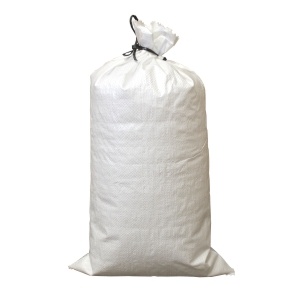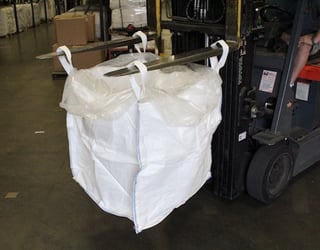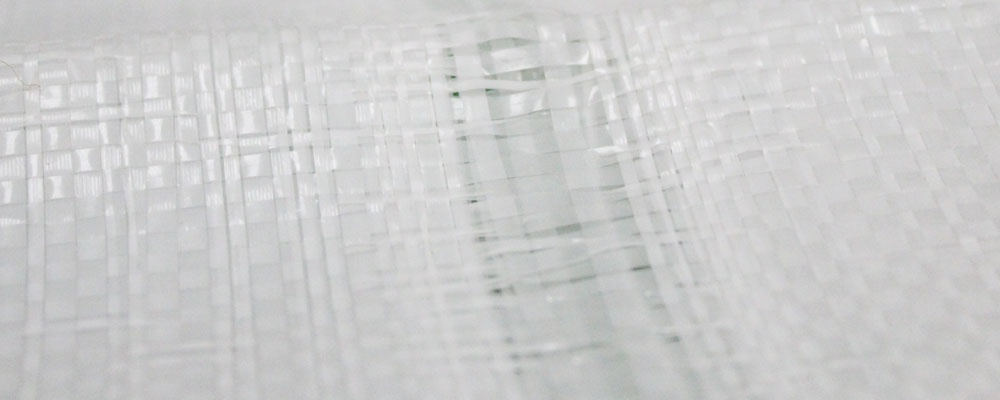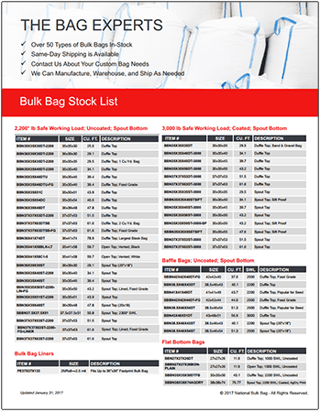Advances in synthetic polymers over the years have given rise to new innovative materials with a wide variety of applications. One such polymer, called polypropylene, has been particularly useful in the packaging industry.
If you’re conducting a web search for FIBCs or bulk bags you may come across the term ‘woven polypropylene bag(s)’. What is woven polypropylene? How is it related to FIBCs and types of bulk bags? In this post, we will address these questions and more.
What is Polypropylene?
Polypropylene, sometimes referred to as polypropene, is a thermoplastic resin material created by the polymerization of propylene. It’s a rugged material that is unusually resistant to chemicals, bases, and acids. These properties are what make it such a great material for a wide variety of industrial uses.
Woven polypropylene is created by taking strips or threads of poly and weaving them together in opposite directions to form a strong, lightweight material. This process is essential to creating useful items like bulk bags.
Polypropylene’s Uses in Packaging
Woven polypropylene’s properties make it especially useful in the packaging industry. These properties include:
- Non-toxic – this allows for a variety of alternate applications including the food and pharmaceutical industry
- Lightweight – it’s remarkably strong for how light it is, making it great for FIBCs that hold thousands of pounds of material
- Breathable – having the woven materials breathable is crucial to certain applications that require airflow.
- Low cost – the resin itself is affordable allowing wide access to products that utilize polypropylene
- Resistant to acids, bases, and many chemicals – being resistant to chemicals allows woven poly bags to be used in pharmaceutical applications
- Printable (can be printed on)
Woven Polypropylene FIBCs
One of the most common uses of woven polypropylene is in FIBCs and bulk bags. The durable, lightweight, high strength material created by weaving strips of poly together is ideal for the construction of FIBCs that carry large amounts of material.
Some common applications for FIBCs include:
- Agriculture

- Food grade bags are perfect for moving feed, harvested food, and other materials in the agriculture industry
- Food Packaging
- Moving massive amounts of food ingredients around the factory floor can be a lot easier using food grade FIBCs
- Geo Engineering
- Usefulness in the construction of irrigation works, roads, railways, mines, etc., have made it one of the most popular geosynthetics
- Flood Control
- Often these bags are used as oversized sandbags for controlling flood waters in areas that require large barriers
- Construction
- The ability to move materials around a construction site as well as storing and protecting other building materials has made bulk bags extremely useful to the construction industry.
 Thanks for reading!
Thanks for reading!
Thanks for visiting the National Bulk Bag blog! We hope you found this article helpful and informative.
Safety and reliability is our number one priority. Each bag that we sell has a safe working load (SWL) – with the most common being 2,200lbs and 3,000lbs. To make sure the product you’re packing will not exceed the SWL of the bag you’re interested in, you’ll need to know the bulk density of the product you’re packing as well as the cubic foot capacity of the bag.
Click the link below to download our Product Weight Guide and FIBC Volume Calculator to help you determine how much weight a specific bag will hold.






